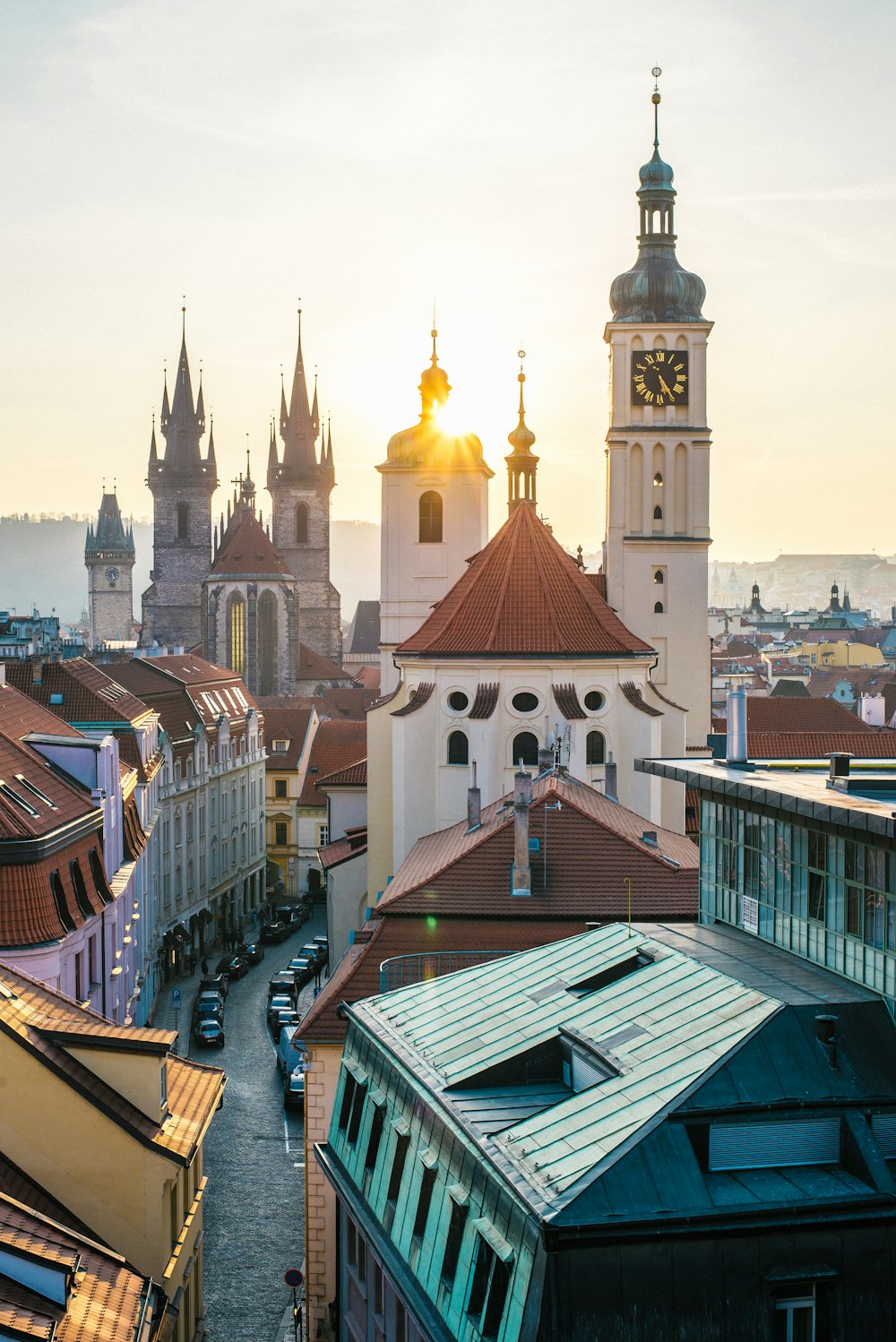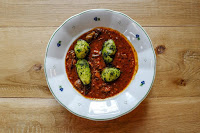 |
| Photo by Dmitry Goykolov on Unsplash |
Prague, Praha in Czech!! One of Prague’s nicknames is “City of a Hundred Spires”, reportedly given to Prague by Josef Hormayer, a Czech writer of the eighteenth century. Nobody really knows how many churches and spires there are in Prague, but at least 500 and likely more than a thousand. Prague is the capital of the Czech Republic.
Know a few Czech words before you go!
Here are a few Czech words and phrases to have in your back pocket:
Hello:
“Dobrý den” / Hi: “Ahoj”
Please:
“Prosím”
Thank
you: “‘Děkuji”
Excuse
me: “S dovolením” or “pardon”
Beer
please: “pivo prosím”
I
love the Czech Republic: “Miluji Českou Republiku”
Goodbye:
“Na shledanou” / Bye: “Čau”
 |
| Courtesy Unsplash |
Architecture: Stroll the streets and admire the architecture. From Gothic to Baroque to neoclassical, gaze upward with your camera ready. Study the facades on aged buildings, discover ornate details and appreciate the charm of Prague. Be sure to keep an eye out for the signs above the doors. Instead of numbers, buildings in Prague used to have plaques above the door identifying their house and occupation.
Another place to enjoy beer (as well as Czech cuisine) is at Lokal, a chain of pubs that serves Pilsner Urquell straight from the tank. It just may be freshest beer you’ll ever have and one of the most delicious. Steps away from Prague Castle, you might want to consider a visit to Strahov Monastic Brewery. You’ll find a brew pub, restaurant and beautiful courtyard where you can enjoy beer as well as traditional Czech food. From my research, the brewery dates back to the 13th century and still brews beer using traditional recipes. You will notice, as you look at the beer menus, that you will see “slice”, “sweet”, and “crème. These refer to the amount of head, or foam, on the top of the beer. Crème is almost all head, sweet is a bit less, and slice is the least amount of head.
Czeck
Cuisine! There are lots of options for foodies to
experience!
·
Trdelník (chimney cake) – You can’t go to Prague and not have a
Trdelník. Dough is wrapped around a stick then grilled on an open flame and
sprinkled with sugar and cinnamon. They are cheap and delicious. You will see an insane amount of vendors
selling Trdelník in the touristy areas but it is really not a local delicacy. This sweet treat has sort of become one of the
most popular Instagram accessories for photos in Prague, actually originated in
Slovakia.
·
Chlebíčky – You will see these Czech
open-faced sandwiches everywhere, as they are a cornerstone of Czech cuisine. Check out Sisters Bistro!  This is a tasty
little snack, which can feature anything from egg and potato salad to pickled
herring.
This is a tasty
little snack, which can feature anything from egg and potato salad to pickled
herring.
 This is a tasty
little snack, which can feature anything from egg and potato salad to pickled
herring.
This is a tasty
little snack, which can feature anything from egg and potato salad to pickled
herring. |
| Courtesy Eating Prague |
·
Goulash! Goulash isn’t technically Czech, but don’t mention that to
the Czechs. This ( Hungarian) meal has the same presentation as svickova; however,
the sauce is made of tomato paste, caraway seeds, and, the not so secret
ingredient, dark beer.
 |
| Courtesy Eating Prague |
·
Knedliki: bread dumplings. Although the Czech’s do not categorize
knedliki as bread, it very much is. They are typically made of a potato or
flour dough steamed instead of baked. Knedliki is served with svickova and
goulash.
·
Kolena (pork knuckle) This tender piece of meat is marinated in, you
guessed it, beer! . It is served with pickles and mustard and either a side of
dumplings and cabbage or roasted Hasselback potatoes and sauerkraut.
·
Pickled cheese: It’s the
perfect accompaniment to a cold glass of pivo (beer0 and is a Czech pub
classic. It’s basically a soft Camambert
like cheese, with an edible rind, that has been pickled in oil, spices and garlic.
Souvenirs
and Shopping
| Courtesy Prague Garnet Center |
Jewelry: classic or contemporary.
Classic Czech jewelry contains Bohemian garnet, a ruby red gem, “vltavín”, a
forest green rock formed by a meteorite impact about 15 million years ago which
can be found around the river Vltava or Bohemian crystal beads. All three can
be seen in any jewelry store in the city center and bought as a beautiful
souvenir in a form of a ring, bracelet or necklace. Tip regarding Czech garnets: always make sure the store shows you a
certificate of authenticity before you buy anything, as there are plenty of
fakes that will claim the jewelry is made of true garnet.
Bohemian
glass: If
you’re looking for a souvenir that you can display in your home, Bohemian
Crystal is a must! Hand-cut, engraved,
blown and painted decorative glassware ranging from champagne flutes to
enormous chandeliers, ornaments, figurines and other glass items are among the
best known Czech exports! Some stores
will ship it home for you.
Czech
Koh-I-Noor
colored pencils are another souvenir option. Koh-I-Noor Hardtmuth, one of the world’s
most respected names in art and drafting supplies, has been in existence since
the Czech lands were firmly under control of the Austro-Hungarian Empire.
 |
| courtesy Rici Marionnettes |
 |
| courtesy marrionettes puppets |
Czech
puppets or marionettes! You will find an
astonishing variety of marionette, from more traditional ones, to small kitchen
witches to whopping winged three-headed dragons. You will likely encounter a marionette of
fictional character, the Good Soldier Svejk, especially in pubs! He’s the main character of a
satirical novel about the First World War, has entered the
Czech national consciousness, and is adorable.
Oplatky
(spa
wafers): These giant wafer cookies have been around since the 1800s. They
are very thin, circular wafers, often lined with a layer of cocoa, hazelnut or
vanilla. These wafers are widely available in supermarkets and stores in Prague;
a more charming place to pick them up is the outdoor Havelská Market in Old
Town.

These wafers are one of the few foods in the Czech Republic officially recognized as a protected regional specialty by the European Union. Large, light and sweet, the wafers were created around the 18th century as a crisp delicacy for spa patients.

These wafers are one of the few foods in the Czech Republic officially recognized as a protected regional specialty by the European Union. Large, light and sweet, the wafers were created around the 18th century as a crisp delicacy for spa patients.
 |
| courtesy Manufaktura |

No comments:
Post a Comment